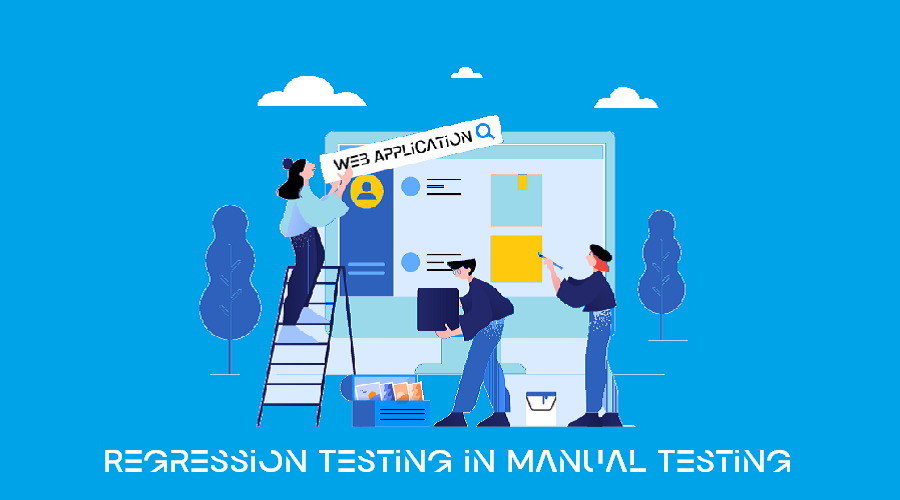Ensuring Software Stability: A Guide to Effective Regression Testing in Manual Testing

The tech evolution’s last decider is regression testing in manual testing. Its job is to evaluate the effects of format changes and conduct a lookup operation on any unintentionally generated flaws during development.
Significantly, various manual and automated approaches may be used to do the evaluation process when you employ software regression testing services, each of which has its advantages. We are all aware that automation produces efficiency. Manual testing, in contrast, to hand, benefits from human creativity and attention to detail.
What is regression testing in manual testing?
——————————-
Manual debugging is the strictest type of safety testing you can carry out before moving on to the next phase of your app’s journey toward the end user. To turn manual regression screening from an expensive annoyance to a useful tool in your larger Framework, you’ll also need the skills and knowledge of quality assurance professionals.
When software regression testing services employed update or modify their work, the results could be shocking. In software testing, regression testing involves examining a system that has already been launched to ensure that no functionality has been affected due to a change or update. Its goal is to find faults that could have unintentionally made it into a new release or launch version while also keeping in mind that problems that have already been fixed need to be fixed.
The only way to ensure that any new modification to a program hasn’t caused regression or rendered previously functional features inoperable is to rerun the test cases that were first created when detected problems were first addressed. Smaller projects might allow for the direct execution of these tests, but for larger projects, a test automation tool is typically required because it is typically both time-consuming and difficult to consider running a set of tests repeatedly every time an improvement is made.
What Are Regression Testing Strategies?
——————————-
The testing process typically lacks a standard operating procedure. However, a QA inspector should be knowledgeable about a variety of fundamental software regression testing approaches.
Step 1: Assortment of Regression Tests
As the name implies, users choose the test data that needs to be manually retested. Since it depends on the portion of the testing method you choose to use and where the raw data has changed during the testing process, we will only run a portion of the test suite.
After that, the test results are categorized as either repeatable or outdated. Reusable ones will be used in the following correction rounds, while out-of-date ones won’t be taken into consideration in further testing cycles.
Step 2: Calculate the duration for running test cases.
Calculating how long it will take to run each test scenario is the next step. Thus, early preparation for testing by the quality assurance team, creation of the testing dataset, evaluation of all test scenarios, and other factors are required since they can all affect how long the project takes to accomplish.
Step 3: Determine which test cases can be automated or done manually
The quality assurance team can choose which test scenarios to automate and which ones to not based on the outcomes of the testing performed in this stage. Test automation scenarios are more efficient than manual methods and allow you to reuse the same code over and over again. Separate the test cases into two categories: manual test cases and automated test cases.
Step 4: Prioritization of Test Cases
This collection’s test scenarios can be rated as strong, moderate, or low. Based on this assessment, you would run the high test cases first, followed by the mild and average test cases, and so on. The architecture of the system and the level of user involvement will determine how significant something is.
Step 5: carrying out test cases
It takes time to run through each test scenario on your own and evaluate how well the item performs during manual testing. Depending on your requirements, you may choose between automatic and manual testing. Functional and non-functional technologies like Selenium, QTP, Watir, etc. can speed up the execution of automation testing scenarios.
When Should The Strategies For Regression Testing In Manual Testing Be Used?
——————————-
Regression testing methods are required under the following conditions:
- Once the current script has been modified to include the new features.
- Each time a patch fix is released
- Whenever security updates are released
- Whenever a change to the script configuration is made
- Once issues with the software architecture are fixed
- Every time the raw code optimization method is put into practice.
- If an issue with inefficiency materializes
When a problem is found, trying to correct it could cause more vulnerabilities to arise that, if left unattended, might be fatal to the software. Despite their challenges, regression tests have to be run as frequently as feasible. By doing this, an update is shielded from unfavorable long-term effects.
Types of Regression Tests
——————————-
Regression testing may be carried out in a variety of methods in software engineering. Among the several types of regression tests are:
1. Retest-all Regression Testing
Simply running a fresh test against the script is all that is necessary for this approach. This kind of examination is exhaustive. It often happens when something seems to have disappeared. Although this kind of continuity testing produces more satisfying results, its thoroughness also makes it quite expensive.
2. Corrective Regression Testing
The testing procedure in this circumstance is simple. The main goal of this method is to examine regression even in cases where the script hasn’t changed. In this type of assessment, the test may be run using predefined test cases.
3. Selective regression test
With this approach, a smaller selection of instances from a larger collection is chosen to evaluate a particular afflicted code section. This approach looks at the potential effects of new code on the current script.
4. Progressive Regression Testing
Such software regression testing takes place after the release of new changes. Instead of using old test data, this type of testing phase employs current test data. This kind of examination ensures that the most recent iteration fixes all significant flaws from the prior one.
5. Partial Regression Testing
Using the present test scenarios, an incomplete testing strategy mainly examines how a new set of instructions would affect an already-existing data set. It is used to make sure that a piece of software keeps working the way it did before recent modifications.
6. Complete Regression Testing
A comprehensive regression test is run when a software application has undergone several modifications. If significant operational adjustments are necessary to enhance the functionality of the script, it is carried out. When the root script has been altered, it typically happens.
7. Unit Regression Testing
The script is examined holistically throughout this sort of testing technique. With this approach, it is necessary to keep away from any existing variables and connections when running the test.
FAQs
——————————-
Are regression tests performed by manual testers?
Manual or automation testing is available in regression screening. Smaller numbers of test scenarios may be directly managed more quickly. Automation testing is the best option, nevertheless, if the quantity of regression test scenarios is large. Here, the regression combinatorial test automation is the main objective.
Is Testing for regression part of QA?
Your online platform’s technology and programming are extremely sensitive, and even the smallest changes might have unanticipated effects. In program Assurance, regression testing refers to evaluating the program after a production cycle to make sure that current functionality hasn’t been negatively impacted.
Does UAT include regression testing?
UAT is not as closely related to the product’s overall functionality as regression testing in manual testing is. Before UAT, the company finished, tested, and approved all additional functionality. Will the client be competent or even willing to desire to employ the item? is the problem that UAT aims to address.
Conclusion
Your defense against the risks of modifications made during the creation of an app is regression testing in manual testing. There’s no way to escape the practice of this testing because producing solutions for market use would always involves advancement and innovation.




